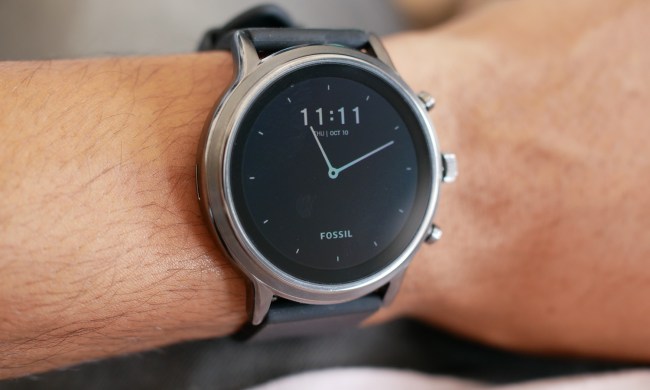Spotify is finally bringing a long-awaited feature, offline playback, to its Wear OS app. The company announced it at Google I/O in May, and now a timeline has been laid out for when users can expect to see this feature on their wrists alongside a refreshed design.
“In the coming weeks, Spotify users will be able to play their favorite playlists, albums, and podcasts with their smartwatches that run Wear OS. By having Spotify on your wrist, you’re more free to run, dance, shop, cook, and socialize — and control your music and podcasts at the same time,” Spotify announced in a blog post. “Plus, we’re excited to unveil one of the most requested features by our users: the ability to download all of your favorite music and podcasts to your smartwatch.”

The new update will be available for Wear OS users on running Wear OS 2.0 or above. This means that you won’t need to buy the new Galaxy Watch 4 or Watch 4 Classic to get in the game, with any reasonably recent smartwatch being supported. Spotify highlights watches from Fossil, Mobvoi, and Suunto as examples of Wear brands.
Once it is made available, Premium subscribers will find a new “Download to watch” button under music or podcasts of their choice. Upon downloading, these songs and podcasts will now have a little green arrow, indicating support for offline playback.
Offline playback has been a request for Spotify from wearable users for years, with the company finally bringing it to the Apple Watch in May after a long period of Tizen exclusivity, freeing users from needing to be paired to an iPhone. With it now coming to Wear OS, the streaming service now offers offline support on all major wearable platforms.
Spotify’s announcement coincides with the first product launch featuring Google’s new refreshed Wear OS operating system with the Samsung Galaxy Watch 4. Google also announced an app update of its own to mark the occasion, bringing YouTube Music to the Wear OS platform with offline downloads in tow. Unlike Spotify, however, Google’s own music streaming app is exclusive to Wear OS 3.0. Fortunately for users on older smartwatches, Spotify’s announcement means that an alternate option will be made available in the weeks to come.



